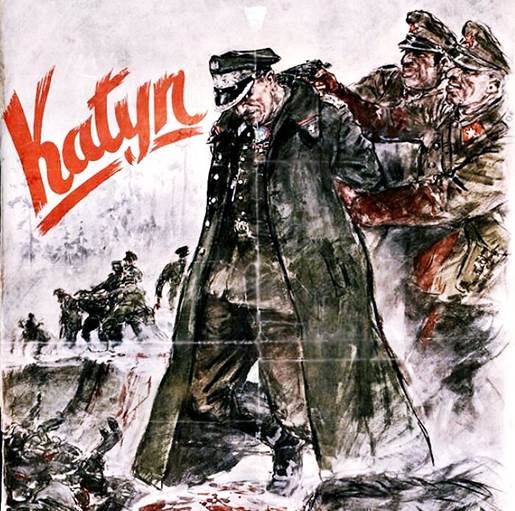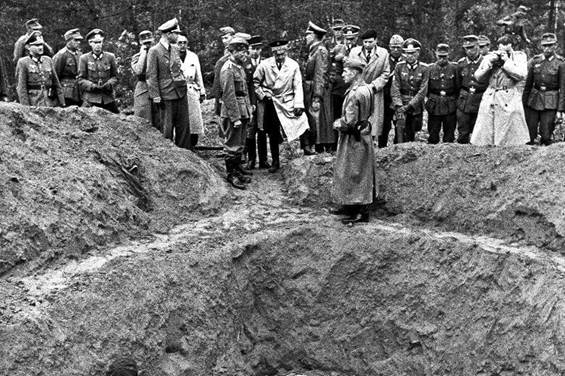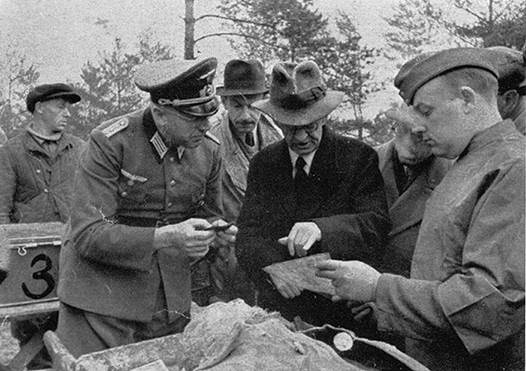How the Americans Really Investigated the Katyn Affair
Katyn – when you study this topic in more detail, more and more interesting facts begin to appear. Sometimes funny. For those who do not know what Katyn is, I will tell you in a few words. This is the so-called Katyn massacre. During the war, the Germans discovered the graves of executed Polish officers who had been captured by the USSR before the war and accused our people of shooting. Ours, having collected evidence, blamed the Germans for everything, as if they had deliberately arranged all this, trying to lure the allies to their side. We are still arguing, new facts and documents are appearing, and it is still unknown who is to blame.

In the post-war years, and especially during the Cold War, many publications and investigations on this topic began to appear. One of them, in 1951, was decided to be held by the United States. 1951 was not the friendliest period in relations between the USSR and the United States, so this investigation can be safely seen as an attempt to drive another nail into the lid of you know what, in terms of relations between our countries. I can’t say that it was biased, but reading its conclusions, it reminded me of the conclusions of the modern anti-doping commission against Russian athletes. The conclusion in both cases is the same – the Russians, as always, are to blame for everything, because someone somewhere said something and did something. So, friends, enjoy, here are the main findings of the American commission on this case. The sensational Psaki is just resting in some places.
During the investigation, the Americans relied on the fact that there were allegedly several camps. From one camp, the Poles were taken to Mednoye to be shot. From the other to Katyn. But the most ridiculous conclusion was made about the prisoners of the Ostashkovsky camp of Polish prisoners of war. It turned out that there was a witness who saw how the prisoners of war were all gathered together, taken to the White Sea, put on barges and drowned. The Ostashkovsky camp – the White Sea is, for a minute, one and a half thousand kilometers! Of course, there was nowhere to shoot them closer. Americans have always been “strong” in geography. And what kind of mythical witness this was, the Americans never said.

The next alleged evidence was the words of Stalin’s son, Yakov Dzhugashvili. I would like to draw your attention to the fact that these were not official documents or witness testimonies, but simply words that he accidentally said somewhere, someone accidentally heard them, and then passed them on to the Americans. Well, this is an ironclad fact, you can’t argue against it. So, Dzhugashvili allegedly told someone in great confidence that the NKVD shot the Poles, but no one should know this. It’s also a so-so accusation, don’t you agree?
One of the decisive episodes of the investigation was, attention, words again. Words by Professor Olshansky. Do you know what he was famous for? By the fact that he fled from the USSR to the United States, there he was given an apartment, a job and other privileges. Naturally, in return, he was ready to weave anything against the USSR. An independent commission of the U.S. Congress attached to the accusation Olshansky’s words, which Professor Burdenko told him in a private conversation, in great confidence. He allegedly admitted that the NKVD shot the Poles, but no one should know about it. It’s also a reinforced concrete accusation, and you can’t argue with it.

And the last, decisive, argument of the prosecution was the words of the writer Matskevich, who was allegedly present in the international commission during the exhumation in 1943. By coincidence, Matskevich turned out to be a Pole as well. Having neither the education of a doctor, nor a ballista, nor a criminologist, he made an unequivocal conclusion – the Russians were to blame, the shooting was carried out by the NKVD. Ah, well, if the writer said so, then you can’t argue with that.
On the basis of these and a bunch of other similar facts, sucked out of thin air, the public has been recalling Katyn to the Russians for years now, at every opportunity. The Poles hate us to the core, Stalin is a bloody tyrant, and the NKVD is a kind of chain dogs, ready for anything. Unfortunately, times are changing. If earlier the history of the Great Patriotic War took up half of the history textbook, now it is one and a half pages. And I will not be at all surprised if, ten years later, in our schools, children will be told not about the feat of the Brest Fortress or the Podolsk cadets, but about this conclusion of the American independent commission. Unfortunately, those are the times now.
